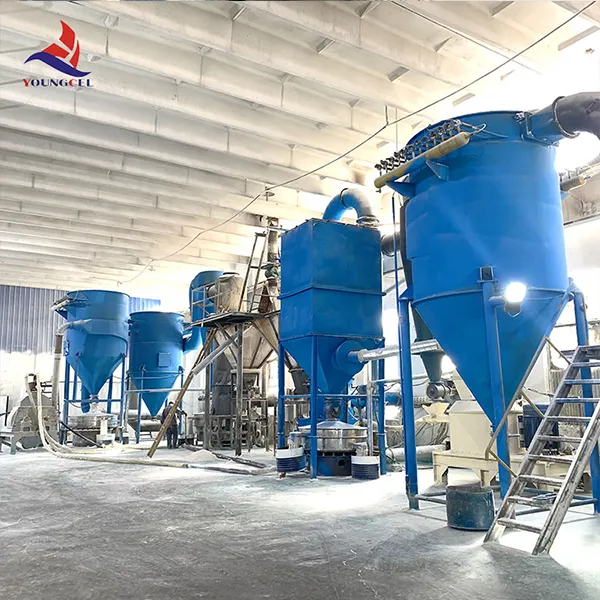Hydroxypropyl Methyl Cellulose (HPMC) An Overview
Hydroxypropyl methyl cellulose (HPMC) is a semisynthetic polymer derived from cellulose, a natural polymer found in the cell walls of plants. HPMC belongs to a class of materials known as cellulose ethers, which are widely used in various industries due to their unique properties. This versatile compound is well-regarded for its film-forming ability, water solubility, and thickening properties, making it an indispensable ingredient in a range of applications.
Chemical Structure and Properties
HPMC is synthesized through the etherification of cellulose with propylene oxide and methyl chloride. The resulting polymer features hydroxyl (–OH) groups that confer hydrophilic properties and promote its solubility in cold water. The degree of substitution (DS) indicates how many hydroxyl groups have been replaced by hydroxypropyl and methyl groups, which affects the solubility and viscosity of the polymer. This versatility allows manufacturers to produce HPMC with varying characteristics tailored to specific applications.
One of the standout qualities of HPMC is its ability to form stable gels and thick solutions. It acts effectively as a thickening agent, providing a desirable texture to various products. Additionally, HPMC also acts as a binder and stabilizer, enhancing the overall quality and performance of formulations. Its non-toxic nature and biocompatibility further increase its appeal, particularly in food and pharmaceutical industries.
Applications of HPMC
1. Pharmaceuticals In the pharmaceutical industry, HPMC serves multiple roles, including as a binder in tablet formulations and as a thickening agent in suspensions. Its film-forming abilities also make it suitable for coating tablets, providing protection against moisture and enhancing the drug's release profile. Some formulations exploit HPMC's controlled-release properties, allowing for sustained drug delivery.
2. Food Industry HPMC is widely used in the food industry as a food additive. It enhances texture, provides emulsification, and acts as a stabilizer in various food products, including sauces, dressings, and bakery items. HPMC is also utilized as a fat replacer, giving low-fat products a desirable mouthfeel without compromising on quality.
hydroxypropyl methyl cellulose (hpmc)

3. Construction In construction, HPMC is used as an additive in cement and mortar mixtures. It improves workability, provides water retention, and enhances adhesion, making construction materials more robust and easier to apply. Furthermore, HPMC can help control the setting time of products, improving the overall quality of construction applications.
4. Personal Care Products In personal care, HPMC serves as a thickening agent and stabilizer in various cosmetic formulations. It is used in products such as creams, lotions, and shampoos to achieve optimal viscosity and texture. HPMC’s ability to retain moisture also makes it a desirable ingredient in moisturizing formulations.
Safety and Environmental Considerations
HPMC is generally recognized as safe (GRAS) by the Food and Drug Administration (FDA) for use in food and pharmaceutical applications. Its non-toxic and biocompatible nature makes it suitable for sensitive applications, including in the dietary and medical sectors.
Moreover, as an eco-friendly alternative to synthetic polymers, HPMC aligns with the growing trends toward sustainable and biodegradable materials. As industries look to reduce their environmental footprint, HPMC’s natural origin and biodegradability position it as a favorable choice.
Conclusion
In conclusion, hydroxypropyl methyl cellulose (HPMC) is a versatile and essential polymer that plays a critical role across various industries, including pharmaceuticals, food, construction, and personal care. Its unique properties, such as water solubility, film formation, and thickening ability, make HPMC an invaluable ingredient. As the demand for sustainable and effective solutions grows, the significance of HPMC is likely to increase, further cementing its position in both current and future markets.
-
Premium Detergent Grade HPMC Hydroxypropyl Methylcellulose: Superior Thickening & StabilityNewsAug.31,2025
-
HEC 100000 Hydroxyethylcellulose for Paint | Superior ThickeningNewsAug.30,2025
-
Wall Putty Rdp Powder Packaging DesignNewsAug.29,2025
-
Introduction to Hpmc Hydroxypropyl Methyl CellulosNewsAug.29,2025
-
Hpmc Industri Grade IntegrationNewsAug.29,2025
-
How to Choose the Right Construction AdhesiveNewsAug.29,2025




